No Results Found
The page you requested could not be found. Try refining your search, or use the navigation above to locate the post.
In this important episode of the Dog-Harmony Pupcast, co-hosts Nancy Bown, CPDT-KA and Sydney Bassett of Mills Photo Design dive into everything you need to know about heartworms — just in time for Heartworm Awareness Month in April.
Plus, a special guest from South Walton Mosquito Control District joins Nancy and Sydney to share what we can do to reduce mosquito populations in our communities, starting with just a bottle cap of water.
Whether your pup spends most of its time indoors or outdoors, this episode is packed with essential info to keep them safe and heartworm-free all year long.
Click below to listen now and help us spread the word: Heartworm disease is 100% preventable.
You can also learn more in our article, Canine Heartworm Disease, written by Dr. Krystin Carr, DVM of Kindness Pet Hospital.
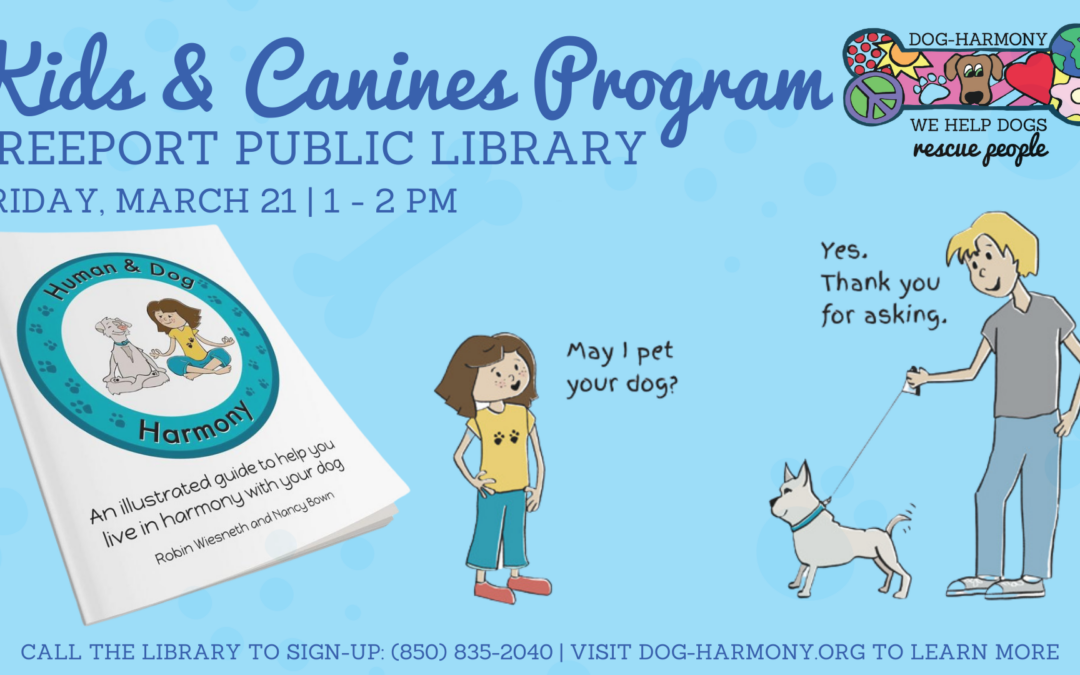
Love dogs and want to learn more about how to interact with them? Then Dog-Harmony’s Kids & Canines program at Freeport Public Library on Friday, March 21 at 1 pm is for YOU!
This workshop is geared toward children ages 6-12. It teaches basic canine body language and signs of stress so that children can interact more safely with dogs. The children will then practice these new skills with certified therapy dogs.
Call the library at (850) 835-2040 to sign up for the program on March 21.
If you represent a local library, please contact Nancy Bown to get your location included in the program’s visiting schedule.
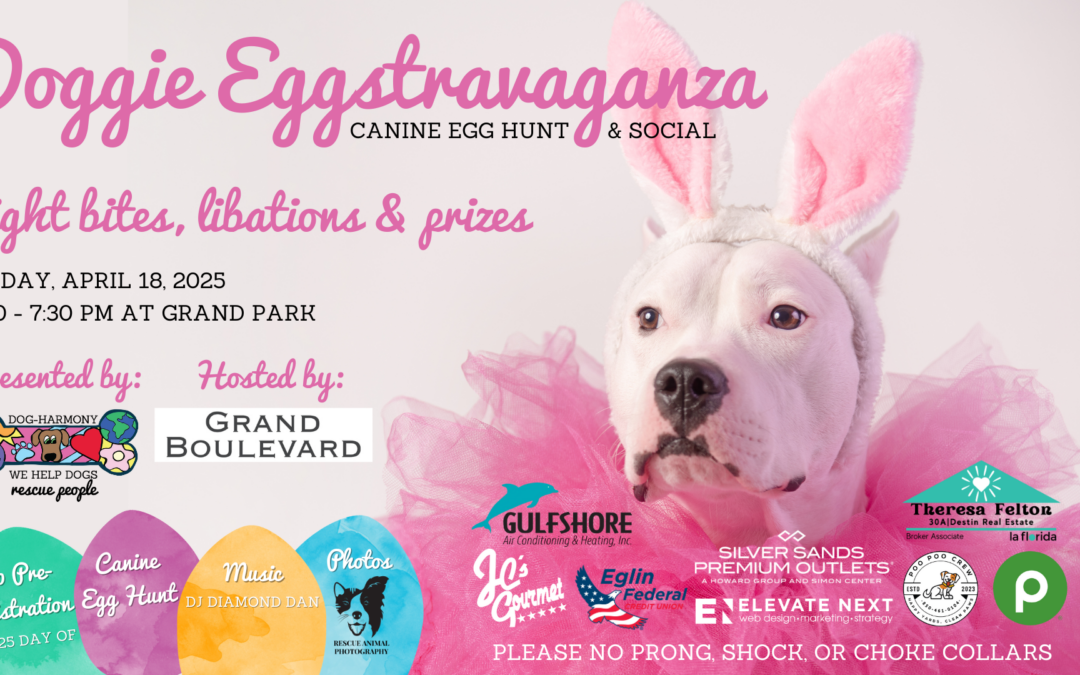
With a $20 pre-registration per pup (or $25 the day of), leashed canines and their human companions will receive a souvenir bag to collect colorful eggs filled with delicious puppy treats.
Join us at the Green on Grand Boulevard.
Registration closes at 6:30 pm.
Doggie EGGstravaganza kicks off in Grand Park, which is the green space between Tommy Bahama’s and Cantina Laredo in Grand Boulevard.
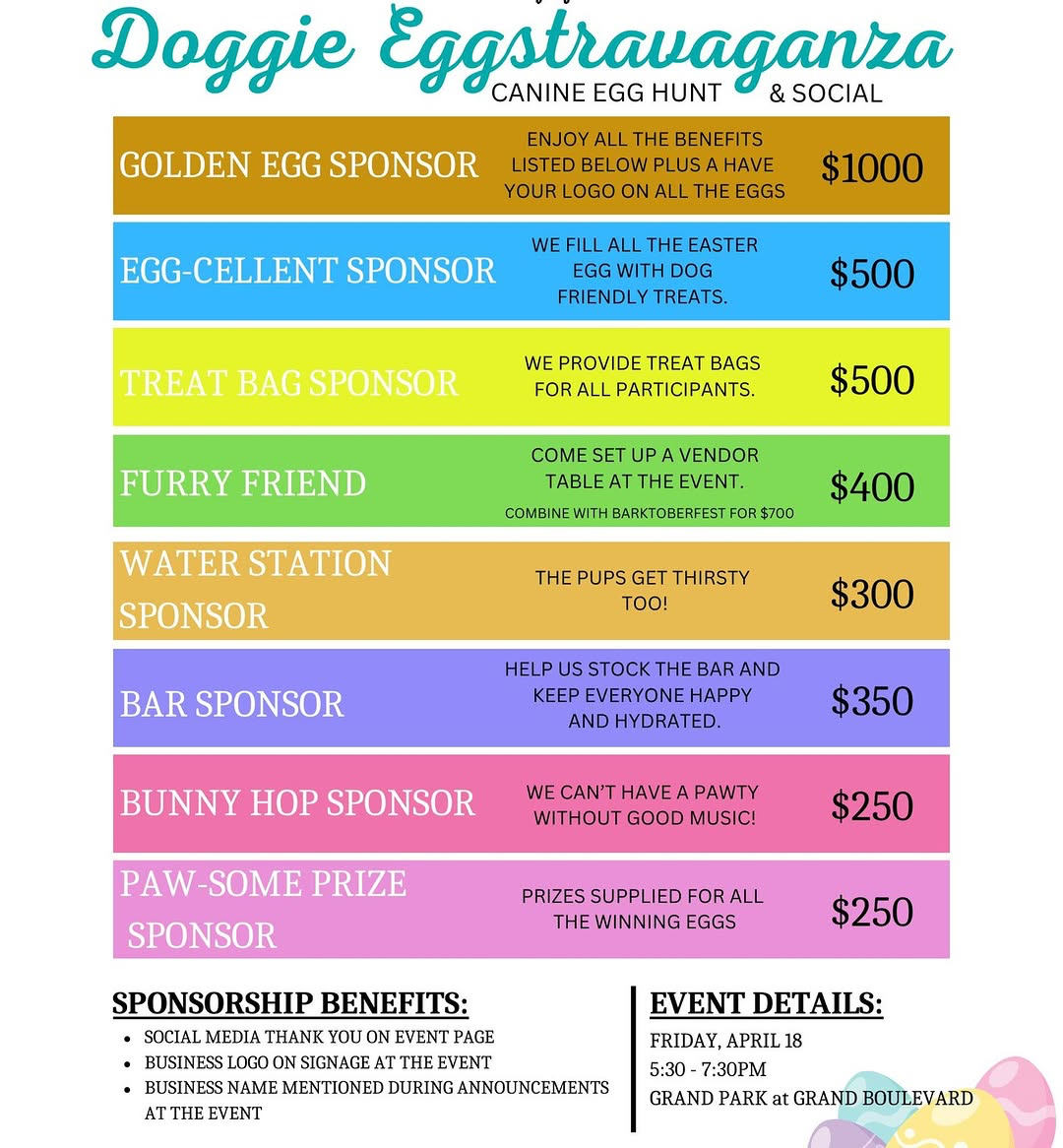

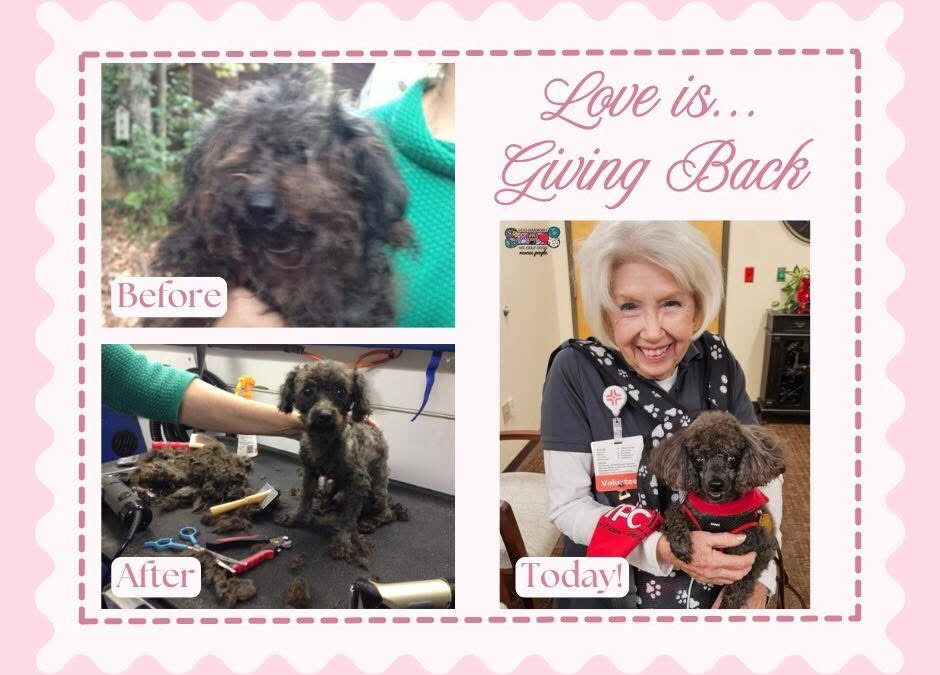
Written by Kay Graves
We rescued Tiger in 2015 at Our Pal’s Place in Marietta, GA. He was approximately one year old. I had two older dogs at the time. Had it not been for Charley’s loving care, I am not sure Tiger would have made it. It took about 2 years for Tiger to adjust (calm).
We trained with Dog-Harmony to become a therapy dog team. We now volunteer at HCA Florida Fort Walton-Destin Hospital and Lotus Learning & Arts Center. We walk with the Dog-Harmony’s therapy dog teams at HCA and greet staff and patients.
At Lotus Learning Center, the children read to Tiger, or we explore music through handbells or keyboard. Before Christmas, we learned to play short pieces of Jingle Bells, Rockin’ Around Christmas Tree, and Deck the Halls on the bells. We look for patterns on the keyboard and find “D” for the Dog in the dog house made by the two black keys and “F” for the Frog on the low side of the three black keys.
We can improvise on the black keys, keep a steady beat, and listen and play short rhythms in unison. We can play short segments of JAWS, Star Wars, and Harry Potter themes. Tiger sits in a chair and listens when we do keyboard. The students greet Tiger when they come in. We play fetch, and each child gives him a treat.
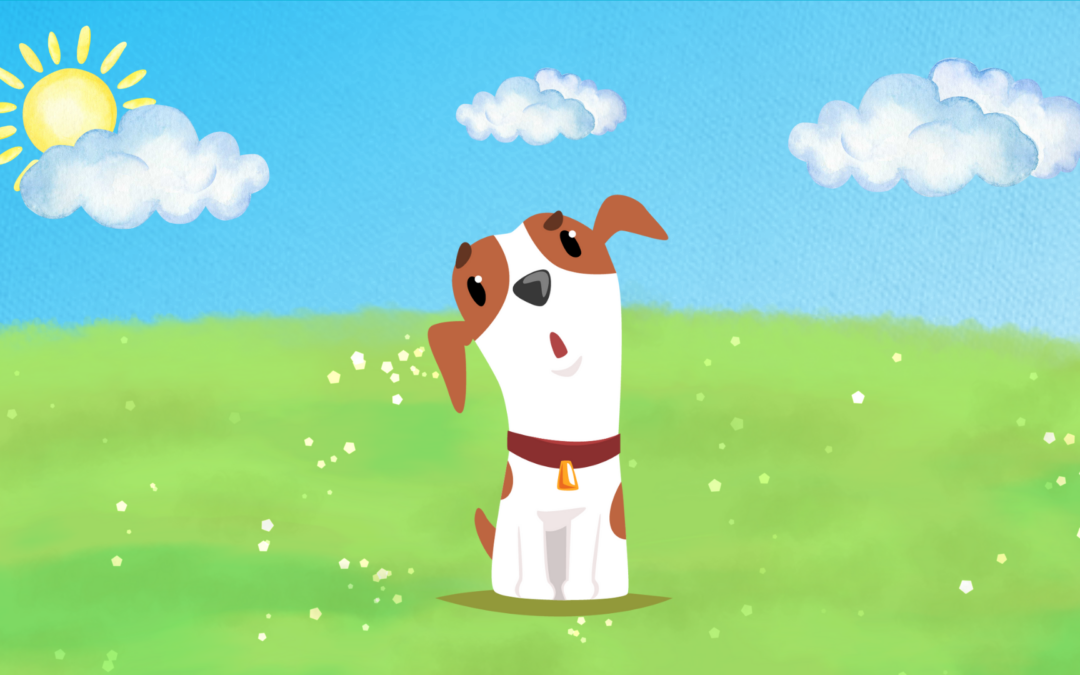
Written by Hannah Garbett
Puppies are a blast! They have infinite energy for fun and can be an adorable source of endless affection and entertainment. They can also be a lot of work! With fun and games come chewed shoes and late-night potty trips outside.
Let us help you start on the right foot with your new best friend! We’ve compiled some of the best advice from trainers and puppy experts around the country on everything you need to know to be a super puppy parent. From potty training and puppy biting to enrichment and setting expectations, you’ll find the answers to help you survive the amazing and exhausting adventure of raising a canine companion.
The page you requested could not be found. Try refining your search, or use the navigation above to locate the post.